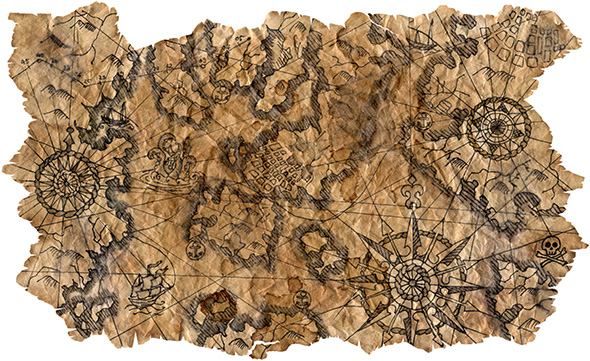Figuratively speaking
The Legal Genealogist has not fallen off the edge of the world.
Well…
Maybe…
In a way…
Figuratively speaking, anyway.

January is SLIG season. For those who aren’t familiar with the acronym, it stands for Salt Lake Institute of Genealogy. A group of week-long immersive courses in a wide array of topics, and I’ve been privileged to be one of the course coordinators for some years now. Which, of course, has meant I couldn’t take a course at the same time.
Because of the pandemic, this year’s institute courses were online. And, because of the pandemic, the courses were split over two weeks. Which, of course, meant I could take a course in the other week.
All of which is a long way of saying I first fell off the edge of the world into my own class, an advanced law-for-genealogists class.
And then promptly fell off the edge of the world completely by taking the class coordinated by my friend and colleague, LaBrenda Garrett-Nelson, JD, LLM, CG, CGL, entitled In-Depth African American Genealogy.
Wow…
Just wow…
Understand that slavery was never an issue I expected to have to deal with in my own family history back when I first got interested in genealogy. My father was born in Germany and emigrated to the United States with his parents, arriving in 1925.1 My mother had noted in my older sister’s baby book that her great-grandparents were born in Ireland and Wales, putting their likely arrival in the United States around or after the time of the Civil War.2
Snort…
Apparently Ireland and Wales are small towns in Mississippi, since that’s where those folks were actually born — and yes, we do have enslavers in our direct lines.
At a minimum, all those my family held enslaved are in our FAN club: friends/family, associates, neighbors.3 And because of the reality that the enslaved were treated as property — as a cash crop to be raised — there are blood relationships as well.4
And I wanted to know more. To research more deeply. To understand better. To help, if I can, the descendants of those enslaved by my family reconnect with their own.
This class was yet another step in trying to learn to do that.
Which is all a long way of saying the blog got set aside a lot in January, to allow for those in-depth week-long immersive experiences.
Only figuratively was The Legal Genealogist falling off the edge of the world.
I’m climbing back onto the map… I promise.
Cite/link to this post: Judy G. Russell, “Falling off the edge,” The Legal Genealogist (https://www.legalgenealogist.com/blog : posted 30 Jan 2021).
SOURCES
- See Manifest, S.S. George Washington, Jan-Feb 1925, p. 59 (stamped), lines 4-6, Geissler family; “New York Passenger Lists, 1820-1957,” digital images, Ancestry.com (https://www.ancestry.com : accessed 30 Jan 2021); citing National Archive microfilm publication T715, roll 3605. ↩
- One of these days I have to remember to ask my sister for permission to cite this with specificity… ↩
- See Elizabeth Shown Mills, QuickSheet: The Historical Biographer’s Guide to Cluster Research (the FAN Principle) (Baltimore: Genealogical Publishing Co., 2012). ↩
- See Judy G. Russell, “Coming to the table,” The Legal Genealogist, posted 28 May 2016(https://www.legalgenealogist.com/blog : accessed 30 Jan 2021). ↩



http://informationwanted.org/
Newspaper notices seeking relatives separated titled Finding family after slavery.
similar to my North Carolina relatives- thanks for more information